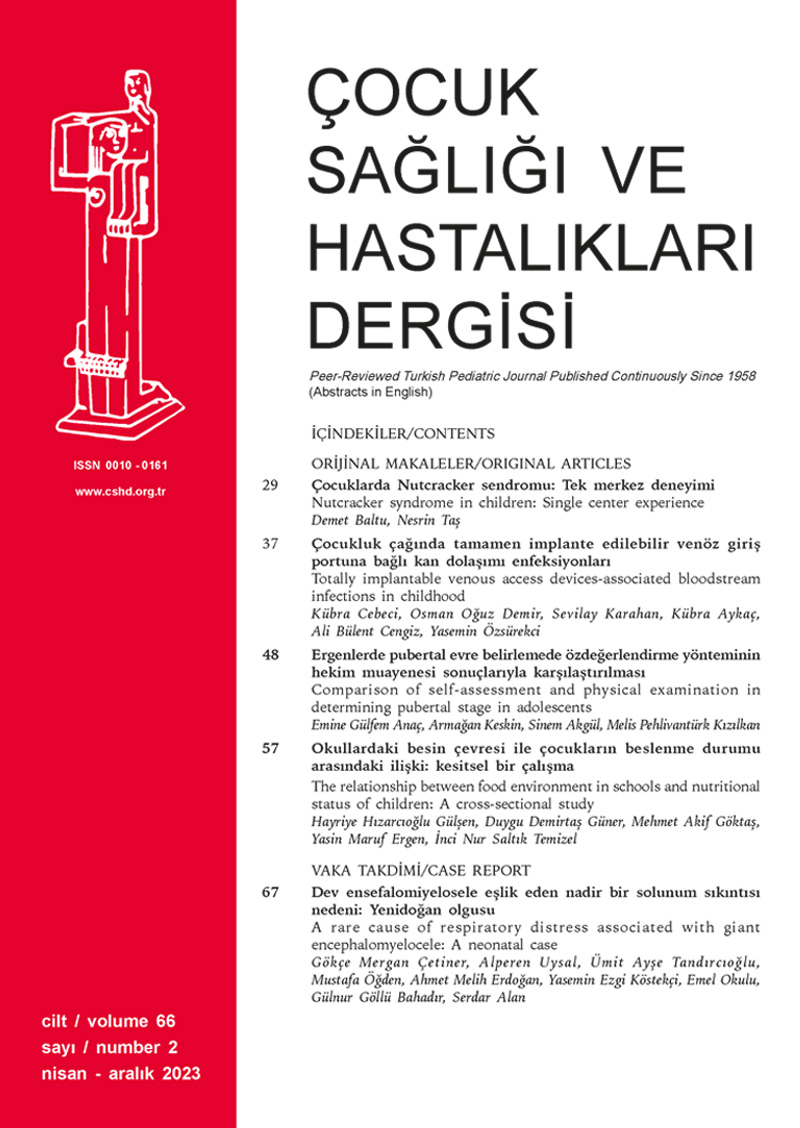Abstract
Pubertal examination is an important part of the physical examination during adolescence; however, it is performed at a low rate due to concerns about insufficeint time, inappropriate examination environment, cultural norms, and patient privacy. In such situations, adolescents may be asked to self-assess for pubertal staging. In this study, we aimed to evaluate the concordance between self-assessment and pubertal examination in adolescents. Before the physical examination, Tanner Stage of Sexual Maturity cards, which visually illustrate the Tanner Stages, were shown to 126 adolescents participating in the study (91 girls and 35 boys). They were asked to select the pubic hair and genital development stages they believed matched their own development. Tanner staging was determined through pubertal examination by 2 pediatricians. When self-assessments were compared with clinical examinations in boys using weighted kappa, concordance was found to be 60% (95% CI: 44%-75%) for genital stages and 58% (95% CI: 39%-77%) for pubic hair stages. For girls, the concordance was 33% (95% CI: 19%-45%) for breast development and 46% (95% CI: 31%-61%) for pubic hair stages. Girls generally evaluated their breast development and pubic hair stages as earlier than it actually was. Boys evaluated their genital development as either earlier or later than it actually was. Although our study showed that boys assessed their pubertal stages better than girls, the concordance between clinician-determined and self-assessed stages was moderately reliable. Pubertal examination should be part of the physical examination in adolescents.
Keywords: puberty, adolescent, Tanner staging, self-assessment, development








